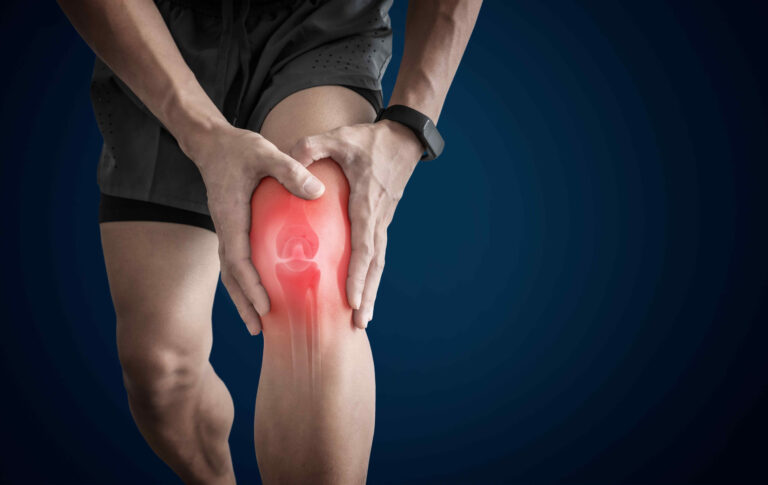Joint pain and stiffness can interfere with everything from simple daily tasks to overall quality of life. Millions of people, from athletes to older adults, face limitations due to damaged or deteriorating cartilage. As science advances, new strategies for tissue repair and joint health are emerging, offering real hope for those in need of mobility solutions.
Addressing pain and stiffness not only involves symptom relief but also long-term strategies for healing and tissue regeneration. The introduction of innovative treatments such as peptides is opening doors for individuals seeking to restore their active lifestyles with less invasive techniques and more durable results. These approaches are increasingly supported by ongoing research, which highlights improved recovery times and enhanced joint function. By combining advanced therapies with lifestyle adjustments, individuals can achieve a more sustainable approach to maintaining mobility and overall joint health.
Bioactive Materials: Regenerating Cartilage
A promising development in joint health is the use of bioactive materials designed for cartilage repair. These novel materials mimic the natural cartilage environment and structure, allowing the body’s cells to replace missing tissue, in contrast to traditional treatments that only relieve symptoms. A substance that encourages the creation of strong, functional tissue has been developed recently at Northwestern University, potentially lowering the need for surgical procedures like joint replacements. Additionally, these materials accelerate recovery; cartilage can be repaired in as little as six months, representing a significant advance over conventional techniques that often take longer and cannot fully restore functionality.
Dancing Molecules: Accelerating Cartilage Repair
Rapid advancements in molecular medicine have introduced “dancing molecules” therapy, which employs dynamic molecular structures to stimulate the body’s cartilage repair mechanisms within hours. This approach not only accelerates healing but also activates essential genes for cartilage growth, providing a targeted solution for chronic joint pain. By ensuring optimal integration and minimizing complications often associated with invasive treatments, these therapies are complemented by comprehensive primary care services. Together with physical activity and healthy lifestyle habits, they promote long-term musculoskeletal health and recovery.
Stem Cell Therapy: Harnessing the Body’s Healing Potential
Stem cell therapy marks another significant leap forward in cartilage restoration. By using mesenchymal stem cells—cells specially adapted to develop into cartilage, bone, or fat—scientists are creating biologically compatible and sustainable repairs. When combined with technologies such as low-intensity pulsed ultrasound, these stem cells show increased effectiveness in regenerating cartilage and restoring healthy joint movement. This combined approach has demonstrated promising results in clinical studies, supporting longer-lasting relief from pain and functional limitations.
Electroactive Materials and Tissue Engineering
Electroactive materials are advancing tissue engineering by providing controlled electrical and mechanical stimulation to enhance cell proliferation and tissue formation. The development of ionomeric extracellular matrices (iECMs) creates a dynamic environment for engineering soft tissues, such as cartilage and muscle, facilitating improved joint repairs and extending possibilities for treating various tissue injuries and diseases through interdisciplinary approaches that integrate biotechnology, nanomaterials, and engineering.
Understanding Joint Degeneration and New Therapeutic Targets
Unlocking better treatments also means understanding why joint degeneration occurs. New research has highlighted the connection between the stiffening of cartilage with age and a decrease in the Klotho protein—a protein closely associated with longevity and tissue health. This insight not only clarifies why osteoarthritis and other degenerative conditions progress but also highlights potential new molecular targets for intervention and preventative care.
Artificial Cartilage Implants: A Non-Biological Solution
For cases where biological regeneration is limited, artificial cartilage implants offer practical alternatives. Constructed from advanced biocompatible materials, these implants replicate the cushion and function of natural cartilage. Already approved for use in specific joints, such as the big toe, ongoing advancements seek to extend these solutions to larger and more complex joints. As technology matures, these implants could play a revolutionary role in minimally invasive surgeries and expedited recoveries.
Conclusion: Looking Toward a Future of Enhanced Mobility
The pace of change in tissue repair is swift, driven by collaboration between biotechnology, clinical research, and personalized medical care. Whether you are considering bioactive materials, advanced molecular therapies, stem cell innovations, or artificial implants, today’s modern approaches to joint repair are designed not only to alleviate pain but also to restore the freedom to move and live an active life. Continued research and holistic approaches—supported by both medical technology and high-quality primary care—are paving the way for better mobility and a brighter, pain-free future.

